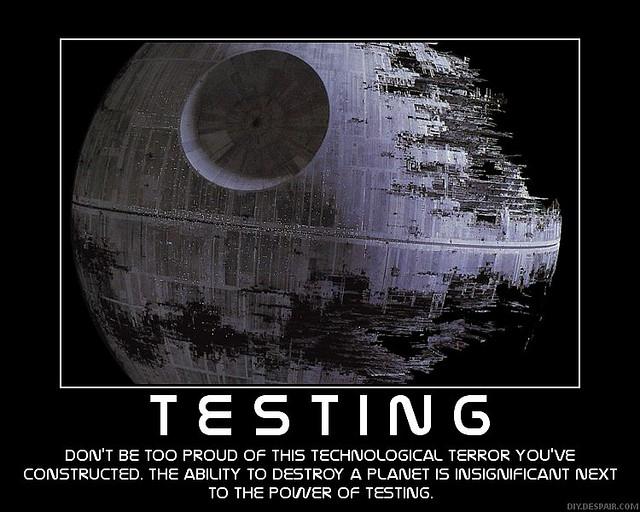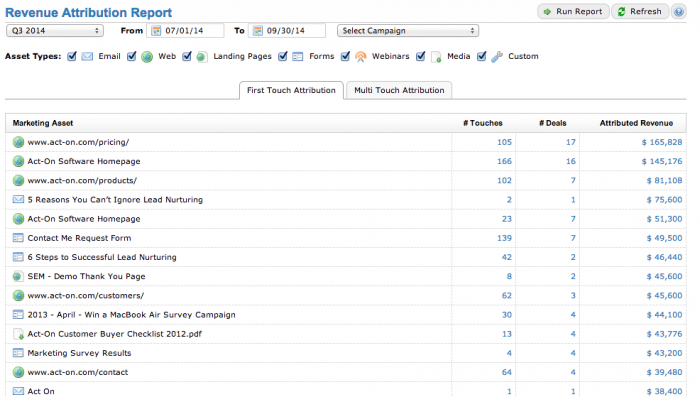 When I worked at a marketing agency about 15 years ago, our focus was on telling stories, making connections, and developing content. In a way, we were way ahead of our time, since these days, it seems like that kind of thing is now built into the DNA of most agencies. But in one very important regard, we were behind the curve: Metrics weren’t an integral part of our process. In fact, they were just sort of nice to have.
When I worked at a marketing agency about 15 years ago, our focus was on telling stories, making connections, and developing content. In a way, we were way ahead of our time, since these days, it seems like that kind of thing is now built into the DNA of most agencies. But in one very important regard, we were behind the curve: Metrics weren’t an integral part of our process. In fact, they were just sort of nice to have.
Sure, we looked at the open and clickthrough rates for the email campaigns we created for our clients. We wrote multiple subject lines that were thoroughly tested by our email technology partner. We examined which articles were performing well on our client’s site, and which ones were viewed less frequently. But that was about it. We mostly depended on our gut instincts to figure out what might work – and what to try next. We also had informal focus groups (asking our friends and family). And then, we would just wing it. Most of the time, it actually worked. But were those articles, videos, interactive adventures, and crafting projects (yes, crafting projects) actually delivering revenue for our clients? I never really knew.
After a few years, I decided I was ready for a change. At that time, one of our clients was a web analytics company. I had been working on their account for a few months, and I decided to jump ship, leaving behind the wild-and-crazy, anything-goes agency life for a corporate in-house marketing team.
Boy, was I in for a shock.
 You can imagine that at a web analytics company, metrics drove everything we did. Every piece of content was A/B tested. Creative executions and marketing campaigns were measured against key performance indicators. I found myself looking at the marketing dashboard more often than the dashboard of my car. We were using metrics to not only measure what had worked in the past, but to predict what was likely to work in the future. And best of all, we were able to pinpoint which campaigns were driving the best return on investment and which one were just taking up space. It was amazing to me.
You can imagine that at a web analytics company, metrics drove everything we did. Every piece of content was A/B tested. Creative executions and marketing campaigns were measured against key performance indicators. I found myself looking at the marketing dashboard more often than the dashboard of my car. We were using metrics to not only measure what had worked in the past, but to predict what was likely to work in the future. And best of all, we were able to pinpoint which campaigns were driving the best return on investment and which one were just taking up space. It was amazing to me.
Metrics Matter
Of course, things are different now. Today’s marketing agencies understand that it’s a data-driven world out there. Creative ideas and brilliant executions are all very well and good, but clients aren’t interested in just feel-good stories – they need the cold, hard facts that can help them understand the role marketing plays in revenue contribution. Because these days, if it’s not adding to this year’s bottom line, it’s getting subtracted from next year’s budget. Marketing agency metrics really matter.
If your agency isn’t able to prove the results of your campaigns, marketing automation may be the solution. With the skills and technology tools to measure the impact of your advertising, you can give your agency the competitive edge. In addition to coming up with brilliant campaign executions, you can also demonstrate your ability to set up, track, report, and continually improve the metrics that matter to your current and potential clients, as well as to their executive managers. Here are just a few of the metrics that may be the most important to them – and to you.

Email Marketing Metrics
As an email marketer, I’ve always loved the instant insight you get after sending a message. Did they love it? Did they hate it? Which links are getting the most hits? You can actually see the results rolling in as the day goes on. It’s much more satisfying than creating a print ad for a magazine or a direct mail postcard and trying to track the number of visits to unique URLs.
The ultimate metrics track the bottom line:
- Revenue: How much revenue did our campaign contribute or influence? Tracking all the way to sales conversion is crucial
- ROI: How much did we spend to relative to how much revenue we earned?
- Conversions: How many responded to the call to action? This metric can include sales, downloads phone calls, appointments, traffic, and much more.
For email marketing, key metrics include all the usual suspects:
- Opt-ins: How many subscribers are on our list? How quickly is it growing?
- Opt-outs: How many have unsubscribed from our list? Do we know why?
- Deliverability: How many abuse complaints are we getting? What about hard and soft bounces?
- Volume: How many emails did we send?
- Opens: Which emails did they open? How many times did they open them?
- Clickthroughs: How many links did they click?
- Open-to-click ratio: Of those who opened the email, how many clicked a link?
- Cost per mille (CPM): How much did we spend to send a thousand email messages?
Of course, depending on the type of campaign you’re running, there may be other key metrics that matter to you and your clients, such as the amount of social sharing happening, the number of forwards, which email clients recipients are using, how many are using mobile devices, and so on.
Lead Generation and Management Metrics
There’s a wide variety of metrics you could be monitoring around lead generation, but it’s important not to get sidetracked by the huge volume of data available to you. Instead, focus on a small set of metrics that you can tie into your client’s business model. That will likely include:
- Number of raw leads generated
- Cost per lead
- Traffic-to-lead ratio
- Lead-to-customer conversion rates
- Number of new customers from marketing-generated leads
- Average deal size of customers from marketing-generated leads
- Cost of customer acquisition
- Pipeline velocity
Again, these are just ideas to get you started. Your client’s needs and goals will dictate the lead generation metrics that are the most important to track.
Putting it All Together
Let’s zoom out a little bit and look at the big picture. Think about metrics in two main categories – revenue metrics and program metrics. Revenue metrics document your tangible contribution to revenue growth and profit. Program metrics are used internally to gauge the impact of campaigns, database management and alignment with your client’s sales team. They’re both critical to the success of your campaigns – and to the success of your client – so keeping track of this information is key.
In fact, this can be an area where your agency gains a significant edge. By using marketing automation, you can provide critical metrics that help show your clients the results they get with you. And proving your ROI is a great way to make sure your agency has a long and profitable relationship with your clients.
Want to learn more? Read this eBook to discover the nine essential strategies that can help agencies of any size take full advantage of the power – and growth potential – of marketing automation.
“Storyteller’s Cafe” by Anthony Giorgio, used under Creative Commons license.
“The Power of Testing” by Sebastian Bergmann, used under Creative Commons license.

